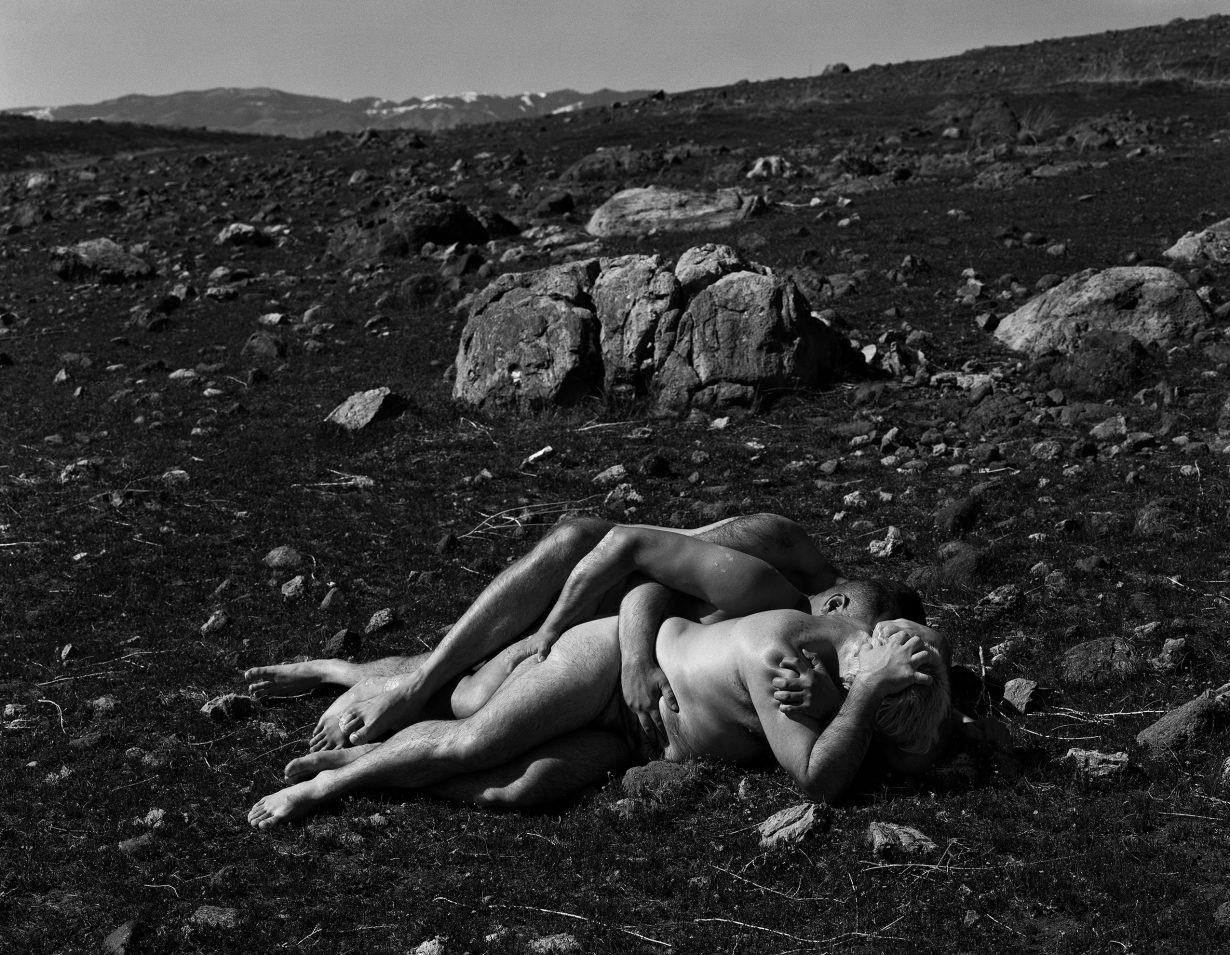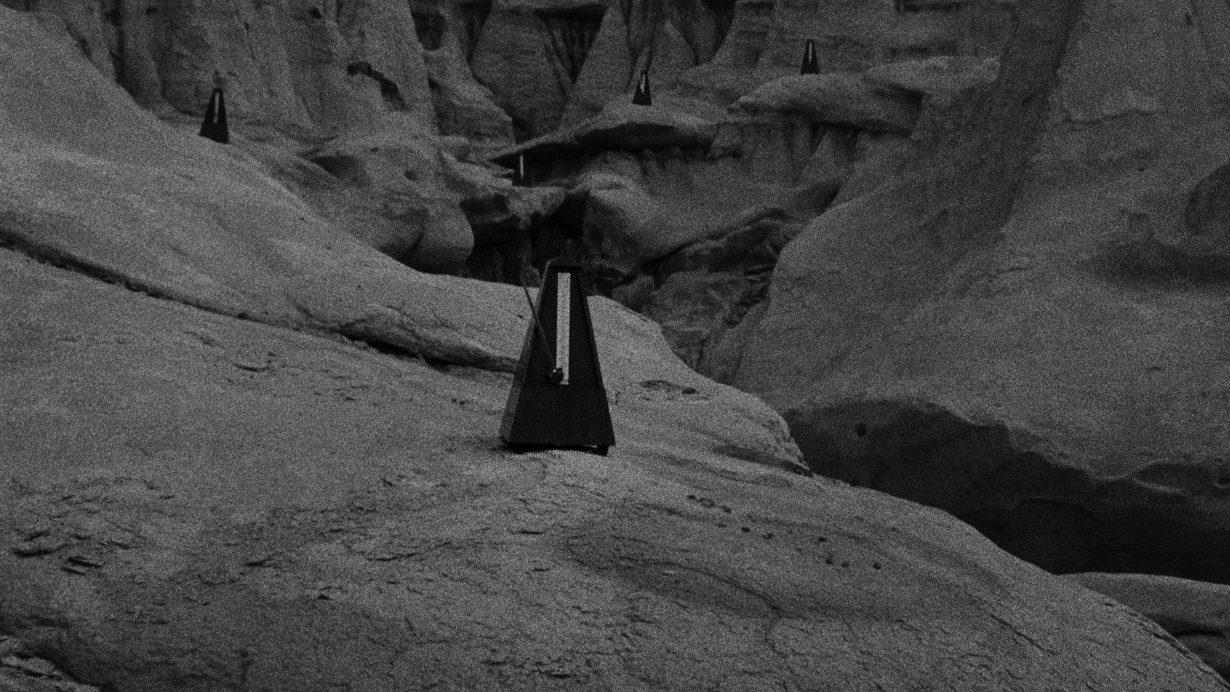In Decreation at the Whitney, Armijo McKnight mines Simone Weil’s neologism to evoke a sense of creation-through-eradication
Decreation consists of five large-format photographs in black and white, two icy limestone sundials and a film projection, which together transform a single room on the first floor of the Whitney. However minimal this monochromatic exhibition, Mark Armijo McKnight succeeds in folding the vastness of the New Mexican desert into the confines of a Manhattan museum: two spaces that appear, at first glance, utterly opposed, save their supposed sterility and sublimity.
Philosopher Simone Weil’s neologism ‘decreation’ describes fulfilment attained through annihilation of the self. Armijo McKnight foregrounds this paradox, mining the banal for hidden potentialities, evoking a sense of creation-through-eradication, as evinced in two pairings of figurative and landscape photography. Anti-Mater (2023), a gelatin silver print in which a woman masturbates in a placid field of flowers, is hung next to Ez Ozel (or: Father Figure) (2023), an identically sized print of a goat skeleton carefully set upon blackened greenery. The playful paired titles carry parental valences: mater (a homonym of ‘matter’) is Latin for ‘mother’, while the Hebrew phrase ez ozel is commonly – though wrongly – translated as ‘scapegoat’. The images therein – a woman engaged in nonreproductive pleasure and a decomposed animal – queer preconceived ideas about the ‘natural’ world that defamiliarise implicitly gendered and biological notions of birth and death, being and nonbeing.

The exhibition also pairs the figurative photograph Somnia (2024) with a landscape titled The Black Place (ii) (2024). Somnia depicts three nude figures entangled in embrace, their piled bodies mirroring a mound of boulders in the midground of its rocky terrain, recalling Laura Aguilar’s Nature Self-Portraits of the 1990s. Black Place pays homage to Georgia O’Keeffe’s favourite painting site, an assortment of unending desiccated yet fleshy hills, rolling forward as if extending beyond the frame. Subsuming the faces of the figures in Somnia and Anti-Mater into their environs, Armijo McKnight’s form of photographic decreation finds furtive and fertile openings in omission, meeting absence with neither longing nor melancholy but with receptiveness and empathy instead. Conjuring a sense of communion between temporalities and topographies – and indulging in contours of light and shadow – he makes dreamscapes of solid matters, softening what appears unyielding.

Without a Song (2024), an 11-minute 16mm film of the Bisti Badlands/De-Na-Zin Wilderness in New Mexico, fills an entire gallery wall, its sound suffusing the space. Duet (2024), a pair of minimalist limestone sculptures with clocklike inscriptions, shorn of sun and shadow, doubles as seating for the film. Without a Song begins on a closeup of a ticking metronome, gradually zooming out to reveal its setting in an ad hoc amphitheatre composed of undulating hoodoos. Additional pendulums, steadily swinging asynchronously, join the audible fray; but as more metronomes become visible within the landscape, the sustained rhythms whittle down until we see at least a dozen active tickers strewn across the Badlands, yet hear only one. The soundtrack eventually settles into a blanket of ambient noise as the camera continues to pan out, as though wishing to extricate itself from the scene and eradicate any proof that it was there.
We are left with a direct view of the sky, a sun dappled with clouds. For a moment, this scene resembles the photograph Clouds (Decreation) (2024), the smallest work in the show, which features a lonely-looking puff of white and errant wisps of grey against a voidlike black background. The film’s wall label quotes Weil: ‘If only I could see a landscape as it is when I am not there.’ Armijo McKnight seems to share this desire, having made kin in this exhibition with absence and its possibilities.
Decreation at Whitney Museum of American Art, New York, through 5 January
